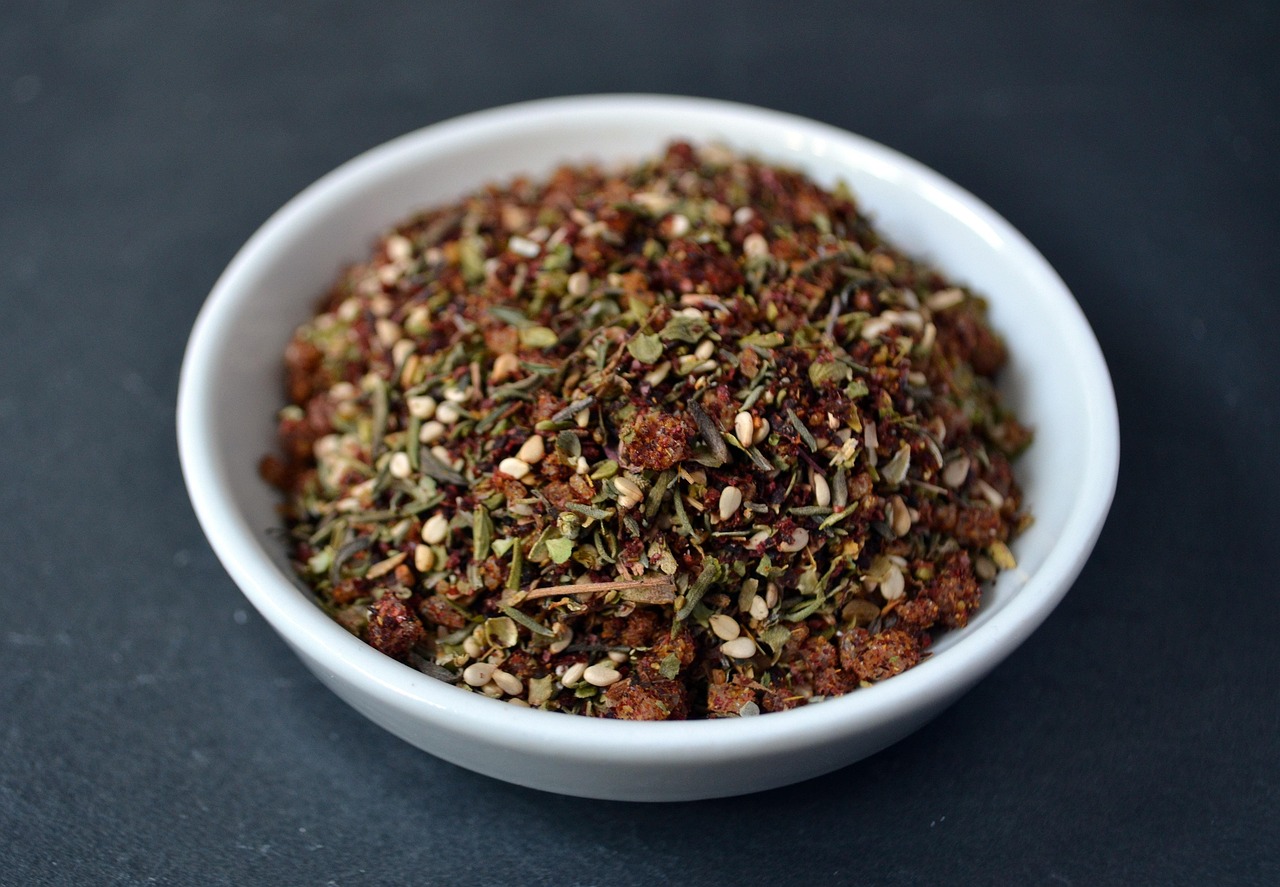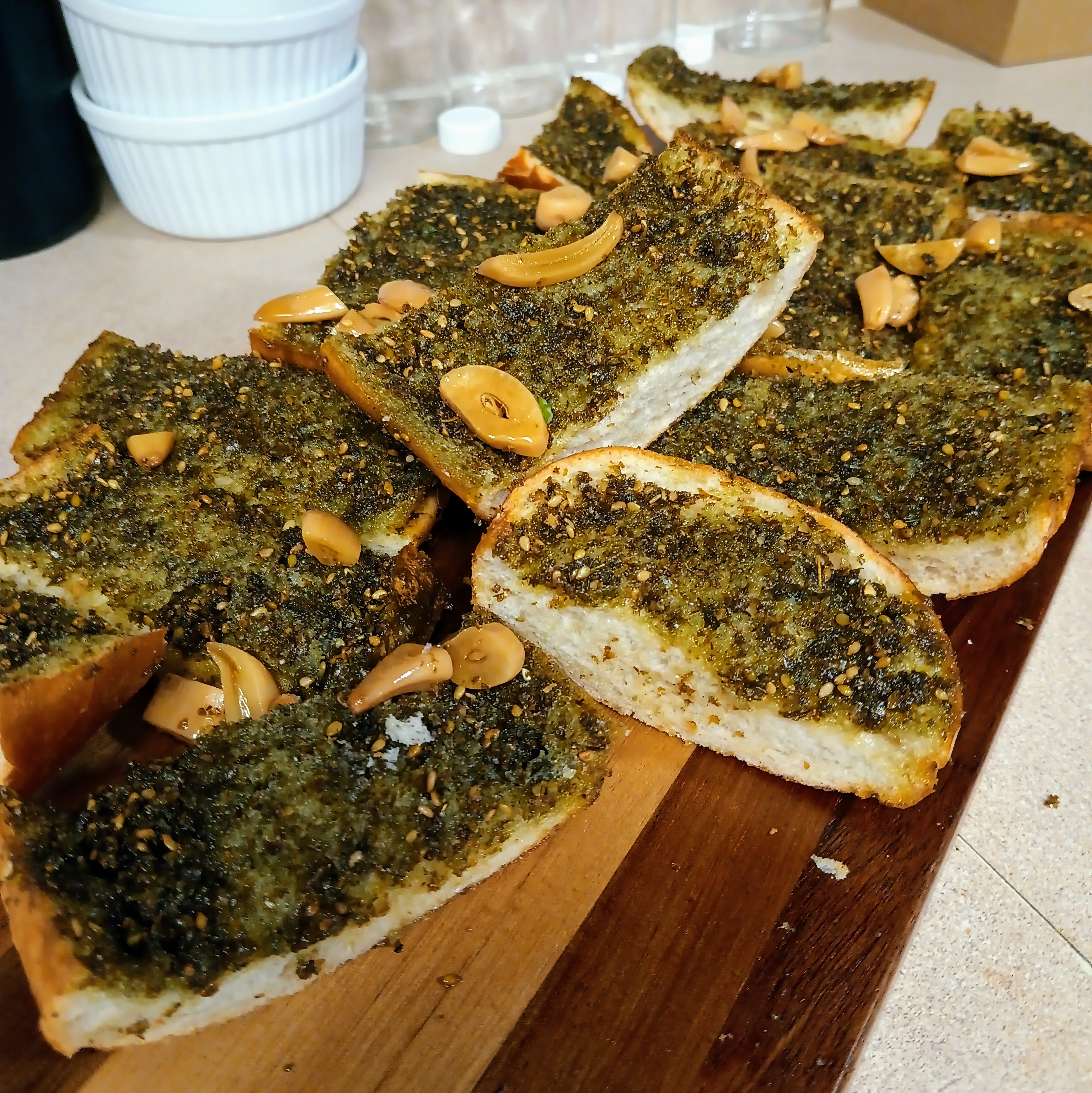Zatar: The Criminally Underrated Spice Mix

If you know me at all, you know I tend to avoid oversaturating my food with herb and spice blends. Just above the “I know literally nothing about cooking” guy, on my scale of foodism, is the “I just use every spice I can think of” guru (along with his cousin “garlic powder goes on everything” and his half-brother, “dude where’s my hot sauce”).
With that being said, there are some spice blends that just hit the spot, and most of them are already really popular, including chili powder, curry powder, and herbes du provence. I’m sure there are more than that, but these are the easy-access dry mixes that come to mind.
However, among the spice mixes there is one to me that not nearly enough people know about, and we need to fix that.
Oh, Zatar (or Za’atar, if you're fancy enough to demand an apostrophe, but trust me, the locals wouldn’t spell it like that) is a culinary mic drop from the Levant region of the Middle East, and frankly, it deserves the spotlight.
What is Zatar?
Zatar is both the name of an herb and a spice blend, which is where things get deliciously confusing. The herb zatar (wild thyme or hyssop) is native to the Middle East, but when you hear people rave about “zatar,” they’re probably talking about the spice mix. This mix varies slightly by region, but the holy trinity of ingredients is:
- Ground dried thyme (or oregano/marjoram in some versions)
- Sumac (that tart, lemony spice no one outside the Middle East seems to know of)
- Toasted sesame seeds (for nuttiness and texture)
Brief History
Zatar’s origins are as ancient as your procrastination habits. References to the herb zatar date back to biblical times, where it’s often tied to spiritual and medicinal practices. Historical texts show that it was used in everything from flavoring bread to being steeped as a tea. Even the great medieval Islamic physician Ibn Sina (aka Avicenna to your intro to philosophy professor) hyped zatar’s benefits for memory and brain function.
In the Levant (modern-day Palestine, Lebanon, Jordan, and Syria), zatar evolved into more than just a seasoning—it’s a cultural icon. Farmers grow it, families pass down secret recipes, and chefs revere it. Its long-standing popularity also has to do with its practicality. The mix preserves the dried herbs, making it perfect for long-term storage in regions with, uh, less-than-ideal refrigeration options throughout history.
Where is Zatar Most Famous?
You’ll find zatar woven into the culinary DNA of Lebanon, Palestine, Syria, and Jordan, with Lebanon often taking center stage for its famous zatar manakish (flatbread). Israelis also embrace zatar—sometimes stirring up cultural debates, as food is deeply tied to regional identity in this area.
But here’s the kicker: Zatar isn’t just locked in Levantine borders anymore. Thanks to Middle Eastern immigrants, zatar is trending in global kitchens from Brooklyn to Berlin. It’s time to get yourself some.
How is Zatar Eaten? (Classic Uses)

This is my zatar-crusted garlic bread, complete with garlic confit, and it would be perfectly at home at any Middle Eastern table. However, let’s start with the basics:
- Manakish/Manousheh (Zatar Flatbread): Imagine pizza’s cooler, simpler cousin. Dough gets brushed with olive oil, sprinkled with zatar, and baked until golden. This is breakfast for half the Levantine world, usually served alongside mint tea.
- Labneh Dips: Labneh (strained yogurt) + a swirl of olive oil + zatar = the MVP of mezze platters. You can smear it on pita or go full barbarian and eat it with a spoon.
- On Roasted Veggies: Zatar sprinkled over roasted eggplant, zucchini, or potatoes is like edible poetry.
- Meat Marinades: Rub zatar all over chicken, lamb, or beef before grilling or roasting. It adds earthiness, tanginess, and nuttiness—aka everything good in life.
- Bread Dipper: Take olive oil, mix in zatar, and suddenly you’re a fancy Mediterranean chef without actually cooking anything. This is the most common way I eat it: tons of zatar in tons of olive oil, spooned out onto bread and shoved into my mouth while I swear that I’m actually being healthy because olive oil is good for you or something.
Super Unique Ways to Eat It
Now let’s get weird, because that’s what you came for:
- Zatar Popcorn: Yes, you read that right. Buttered popcorn with a generous shake of zatar? You’ll never go back to boring movie snacks again.
- Zatar Ice Cream: Middle Eastern fusion chefs are obsessed with throwing zatar into sweet applications. Its herbal notes pair shockingly well with honey or a creamy vanilla base.
- Zatar Chocolate Bark: Dark chocolate, a drizzle of olive oil, and a sprinkle of zatar. Don’t knock it till you’ve tried it—it’s a bizarrely perfect sweet-savory combo.
- Zatar Cheesecake: Picture a savory cheesecake with a zatar crust. It’s like if cheesecake and quiche had a genius baby.
- Zatar Crusted Fish: Encrust salmon or cod with zatar before baking—it adds a citrusy crunch that’s ridiculously satisfying.
- Zatar Fries: Toss French fries or sweet potato fries in zatar instead of boring old salt. Bonus points if you dip them in garlic tahini.
Health Benefits (Because Why Not Feel Superior While Eating?):
Zatar isn’t just tasty; it’s nutritional gold.
- Thyme: Antimicrobial, good for digestion, and packed with antioxidants.
- Sumac: High in vitamin C and has anti-inflammatory properties.
- Sesame Seeds: Rich in healthy fats, calcium, and magnesium.
Final Thoughts:
Zatar is culinary dynamite—versatile, tangy, and earthy. Whether you stick to the classics or get adventurous, this blend deserves a permanent spot in your spice rack. So grab a jar, make some manakish, and live your best Levantine life.
Better yet? Impress your next dinner guests by casually dropping “Oh, this? It’s just zatar from a local market. No big deal.”
 Matthew Christensen
Matthew Christensen
Weekly Newsletter Contributor since 2023
Email the author! matthew@dvo.com
